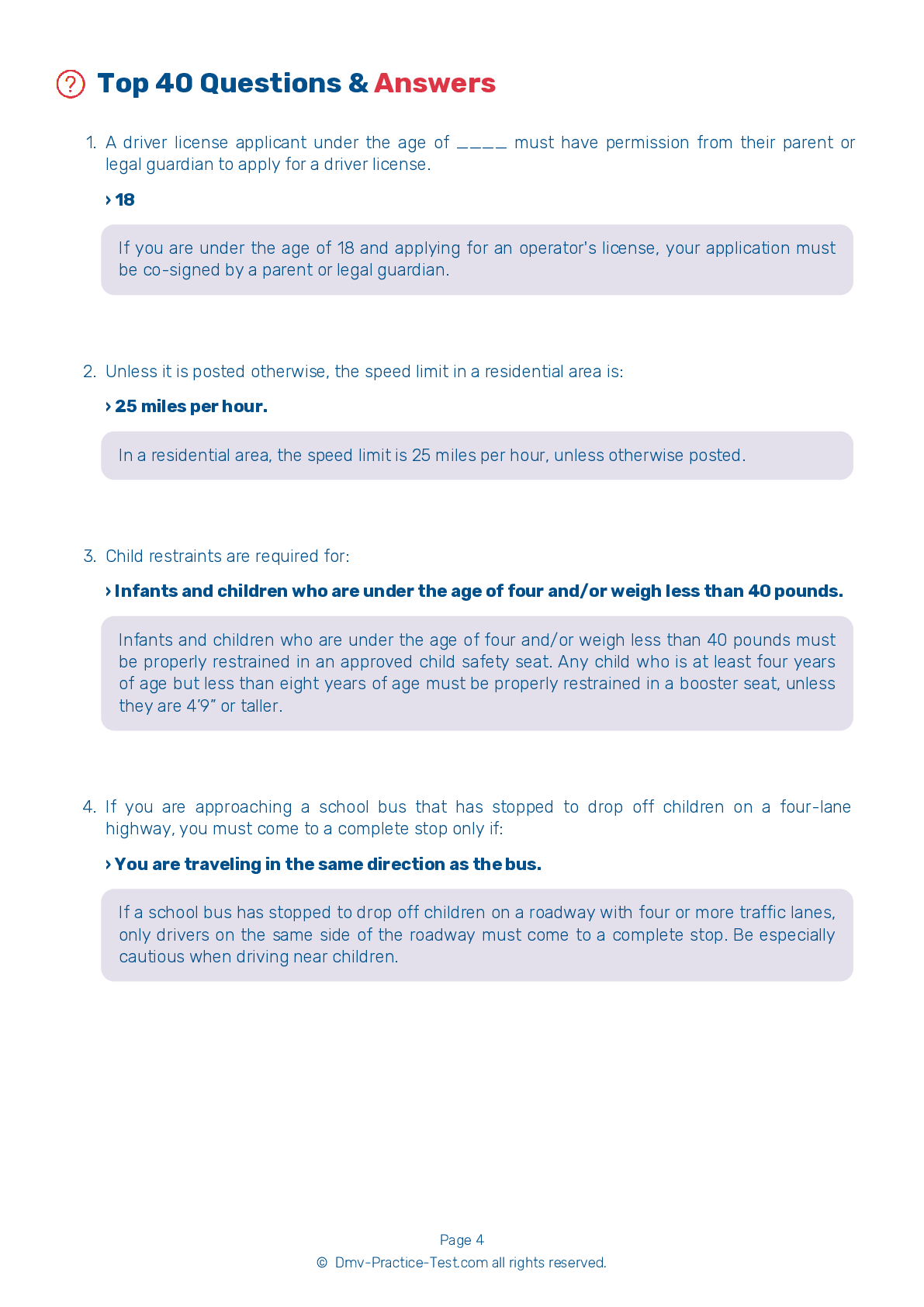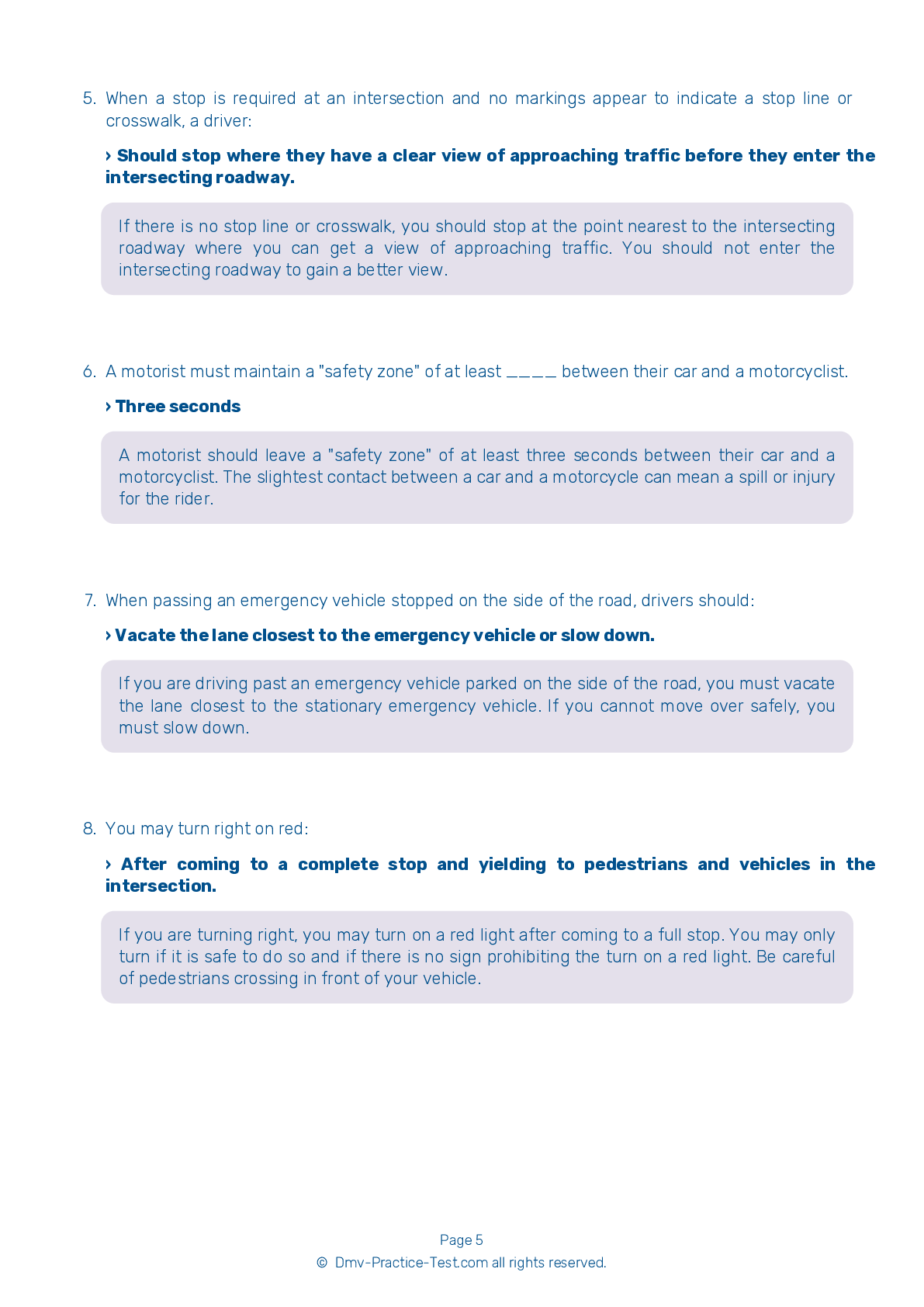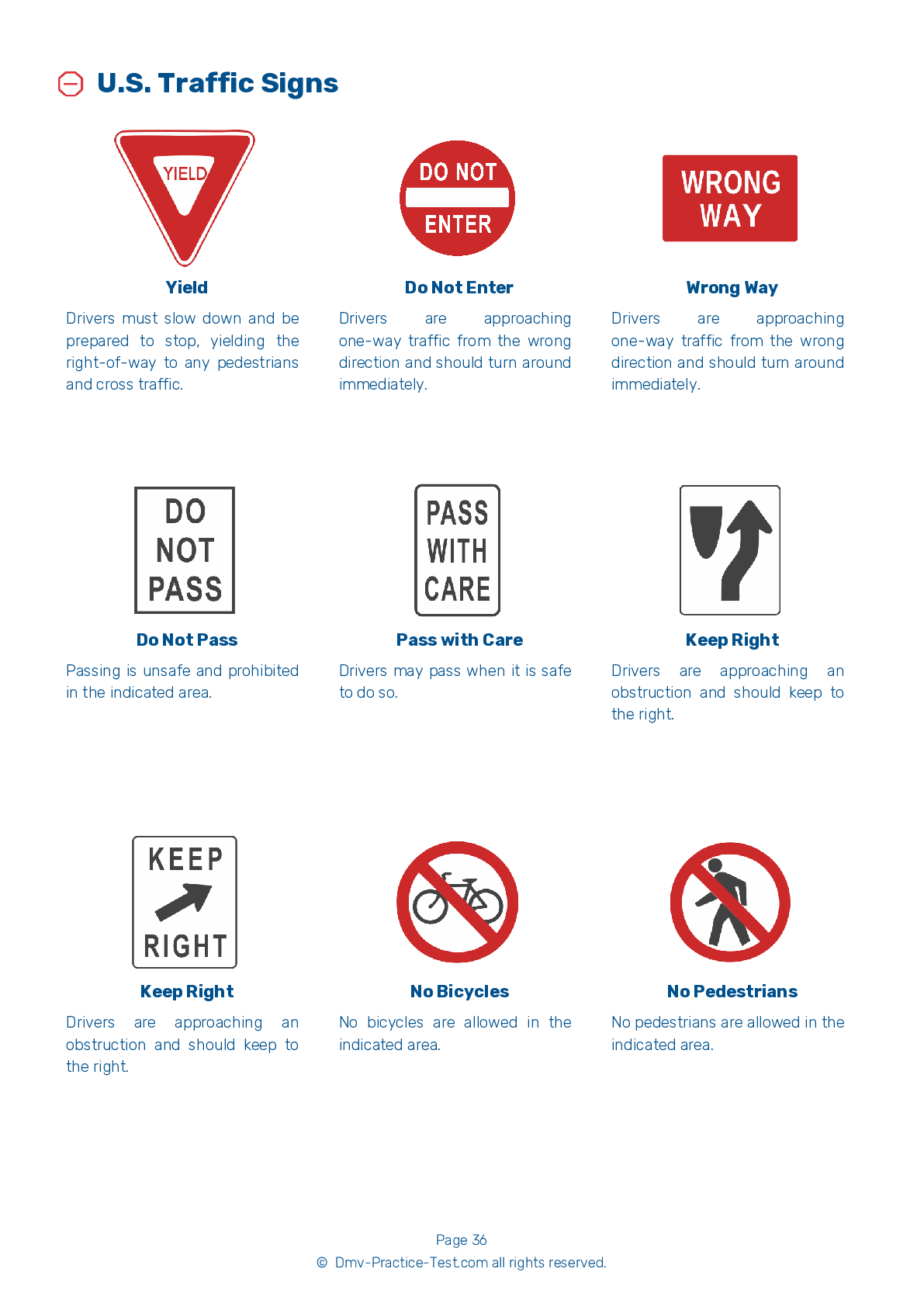FREE Ohio DMV Practice Test #2
The practise exams for Ohio's DMV have been revised for January 2025. It comprises questions based on the most important traffic signals and laws for 2025 from the Ohio Driver Handbook. To study for the DMV driving permit test and driver's licence exam, use actual questions that are very similar (often identical!) to the DMV driving permit test and driver's licence exam.
Each question on the practise exam has a tip and explanation to help you recall the ideas. Questions about traffic rules, traffic signs, and driving statutes, as well as knowledge from the Driver Handbook, will be included in the written portion of the official Ohio DMV test.
You must properly answer 35 of the 40 questions to receive a passing mark. To help you prepare for your instruction permit or driver's licence, take this practise test from the Ohio Department of Motor Vehicles.
The DMV exam is offered in a variety of languages.
Using any form of testing help will result in an automatic fail, and the DMV may take further action against your driver's licence, so avoid it.
1 . If someone has consumed alcoholic drinks, what will help the person overcome the influence of those drinks?
Only the passage of time will allow a person to overcome the influence of alcohol.
2 . Distracted driving is:
Distracted driving is extremely risky behavior that puts not only you and your passengers in danger, but also endangers pedestrians, bicyclists, and other motorists sharing the road. Focused attention on driving helps to prevent crashes.
3 . This sign means:

This sign indicates that the road ahead becomes a divided highway. Keep to the right of the divider or median.
4 . Braking distance is affected by:
Factors that can affect braking distance include how fast your vehicle is traveling, the condition of your brakes and tires, and the condition of the pavement.
5 . As a pedestrian, you should:
Pedestrians should not enter a street or crosswalk when vehicles are approaching. Though pedestrians have the right-of-way in crosswalks, a vehicle approaching from a close distance may not have the time to stop before entering the crosswalk.
6 . This sign means:
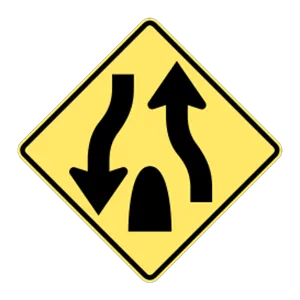
This sign warns drivers that the divided highway ends ahead.
7 . If you see this sign, you:
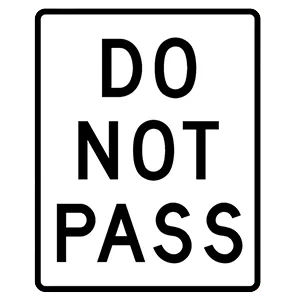
Regulatory signs are white, rectangular signs with black markings. Drivers must obey the instructions posted on all regulatory signs. Where this sign is posted, it is prohibited for drivers to pass one another.
8 . What does this road sign mean?


